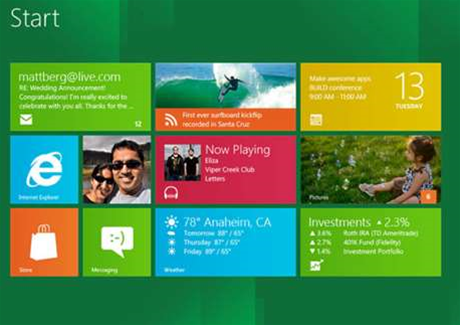Microsoft has simplified the installation process for Windows 8, cutting it from 60 screens to as few as 11 clicks.

The software giant expects installations to be key to Windows 8 uptake, as it is designed to work on all PCs running Windows 7, as well as many running Vista and XP.
Microsoft admitted that the main focus of its install work for Windows 7 was to improve the rate of successful installations, but this time around, it wants the process to be "rock solid, but also faster and easier to use", said Christa St Pierre of the setup and deployment team.
IT admins and other advanced users will still be able to run advanced installations, but Microsoft has streamlined the basic setup system, taking it from a convoluted 60 screens to one that can be completed in as few as 11 clicks.
The "streamlined setup" kicks off inside the older OS by running the DVD or web download - which will automatically preload the 25-digit product key.
It scans the PC for compatible programs, and makes a note of which version and language of the OS to install.
Users can pick from a clean install, or one bringing over settings, personal files and applications.
Users upgrading from Vista won't be able to bring their apps with them, but will be able to keep settings and personal data; those upgrading from XP won't be able to bring apps or settings.
While many applications should work immediately - St Pierre said the team has managed to run 21-year-old Excel 3.0 on Windows 8 - those that don't work will be addressable inside the setup system, meaning users don't need to halt the process and restart it from the beginning.
File transfer
Microsoft also said it had improved the file transfer system for upgrades to Windows 8. Rather than moving each individual file, it moves entire folders, "drastically reducing the number of file operations required", the company said.
Windows 8 also makes file tranfers easier by linking to files in the old system rather than rewriting them, via a "transport" holding folder, to the new OS.
"This means we can link to the actual data on disk in the transport location without having to physically move the file, which has a significant performance gain," Microsoft said.









 iTnews Executive Retreat - Security Leaders Edition
iTnews Executive Retreat - Security Leaders Edition












_(1).jpg&h=140&w=231&c=1&s=0)



